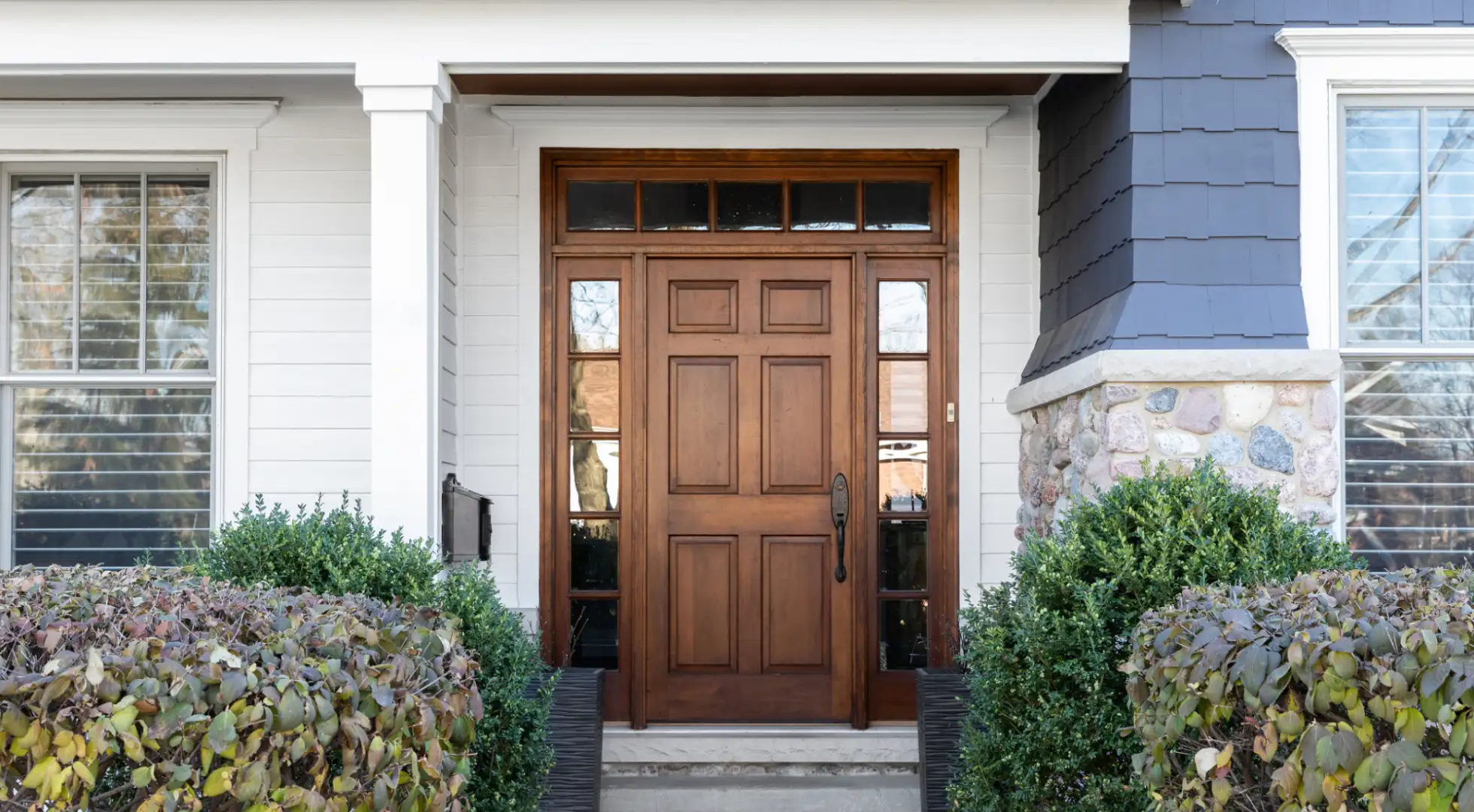Is It Worth Refinancing to Save $50, $100, or $200 a Month?

With interest rates decreasing, many homeowners can refinance and reduce their monthly payments. If you purchased within the past couple of years, current rates are likely lower than when you took out your mortgage.
But how much should you save with a refinance to make it worthwhile? Is it worth refinancing to save $50, $100, or $200 a month?
Is It Worth Refinancing to Save $50, $100, or $200 a Month?
Is it worth refinancing to save $50, $100, or even $200 a month? For some borrowers, absolutely. For others, it may not make sense to refinance to save even $400 a month. Ultimately, the answer will depend on your finances, future plans, and the specifics of your current loan.
A few variables that you should consider include:
Your current loan balance
How long you’ve been making payments
Closing costs on the refinance
How long you plan to keep the new mortgage
How Far Must Rates Drop to Save $50, $100, or $200 a Month?
So, how far do rates need to drop to see a $50, $100, or $200 monthly savings on your mortgage payments? Here's a chart covering the approximate rate reduction you'd need to cut your monthly payment by each amount.
Estimated Rate Reduction Needed for Monthly Savings* | |||
Current Loan | $50 | $100 | $200 |
$75,000 | 1.00% | 2.05% | 4.30% |
$100,000 | 0.75% | 1.50% | 3.10% |
$125,000 | 0.60% | 1.20% | 2.45% |
$150,000 | 0.50% | 1.00% | 2.05% |
$175,000 | 0.40% | 0.85% | 1.75% |
$200,000 | 0.35% | 0.75% | 1.50% |
$225,000 | 0.35% | 0.65% | 1.35% |
$250,000 | 0.30% | 0.60% | 1.20% |
$275,000 | 0.25% | 0.55% | 1.10% |
$300,000 | 0.25% | 0.50% | 1.00% |
$325,000 | 0.25% | 0.45% | 0.90% |
$350,000 | 0.20% | 0.40% | 0.85% |
$375,000 | 0.20% | 0.40% | 0.80% |
$400,000 | 0.20% | 0.40% | 0.75% |
$425,000 | 0.15% | 0.35% | 0.70% |
$450,000 | 0.15% | 0.35% | 0.65% |
$475,000 | 0.15% | 0.30% | 0.60% |
$500,000 | 0.15% | 0.30% | 0.60% |
*Assumes current mortgage rate of 7.5%
As a rule of thumb, the larger your current loan balance, the smaller the rate reduction you'll need to see significant monthly savings.
For Example: A homeowner with a $300,000 mortgage at 7.5% could save $200 a month by refinancing down to 6.5%. Someone with a $1,200,000 mortgage at 7.5% would only need to reduce their rate to 7.25% to realize a $200 monthly savings.
Conversely, you could need a considerable rate reduction for any noticeable savings if you have a small loan balance. With a $150,000 mortgage at 7.5%, reducing your rate by a full 1% would only save you around $100 per month.
Calculating Your Refinance Breakeven Point
Refinancing your home means paying closing costs on the new mortgage. Refinance closing costs usually run between 2% and 4% of the total loan. Even with decent monthly savings, it can take a while to recoup that amount.
The number of months until your cumulative savings equal the extra cost is called your refinance breakeven point. You can calculate this figure by dividing your closing costs by monthly savings.
For Example: You have a $150,000 mortgage and can cut your monthly payments by $50 with a 0.50% rate reduction. Closing costs, estimated at 3%, total $4,500. It would take 90 months of payments until you reach your refinance breakeven point.
But what if you’re saving more on a larger loan balance?
For Example: You have a $400,000 mortgage and can cut your monthly payments by $200 with a 0.75% rate reduction. Closing costs, estimated at 2%, would total $8,000. In this scenario, it would only take 40 months of payments to reach your refinance breakeven point.
If you plan on staying in your home (or at least keeping your loan) past your breakeven point, you'll come out ahead by refinancing. If you plan to move or refinance again before then, you may be better off sticking with your current mortgage.
Note: Some closing costs, like appraisal and escrow fees, remain roughly the same regardless of the size of your mortgage. You can expect proportionately higher closing costs if you have a small loan balance.
Reducing Refinance Closing Costs
Some lenders may offer "no closing cost" refinances, but the name can be misleading. In most cases, the fees on these loans are either wrapped into your balance or covered in exchange for higher interest rates. You're still paying closing costs one way or another – you just won't need to bring cash to closing.
However, if you have a government-backed mortgage through the FHA, VA, or USDA, you may be eligible for a streamline refinance.
Streamline refinance programs allow you to adjust your loan’s interest rate and length with less paperwork than a traditional refinance. Plus, streamline refinances don't require an appraisal, so you can expect lower closing costs.
This savings may tip the scale on whether it's worth refinancing in some cases, especially for low-balance mortgages.
Other Reasons to Refinance
Thanks to declining interest rates, many homeowners can refinance and save hundreds of dollars on their monthly payments. But even if you're only saving $50 or $100 a month, it might make sense to refinance despite a distant breakeven point.
You may still want to consider refinancing if you’re able to:
Reduce Your Loan’s Term to 15 Years
One of the downsides of refinancing is that you begin your loan repayment back at square one. But if you've had your mortgage for a while and want to avoid being locked into another three decades of payments, a 15-year refinance may be the solution.
While 15-year refinances have higher monthly payments than their 30-year counterparts, interest rates are lower, you’re only on the hook for half as long, and you’ll save a considerable amount of interest over the life of the loan.
For example, you currently have a $250,000 loan balance and are comparing a 30-year refinance at 6.5% and a 15-year refinance at 6.0%.
15-Year Refinance @ 6.0% | 30-Year Refinance @ 6.5% | |
Monthly Payment ($250,000 Loan) | $2,110 | $1,580 |
Number of Payments | 180 | 360 |
Total Amount Paid | $379,800 | $568,860 |
Lifetime Interest Paid | $129,800 | $318,860 |
Although a 15-year refinance would cost $530 more per month than a 30-year in this scenario, you would save nearly $190,000 in interest payments across the life of the loan.
Swap an Adjustable Rate for a Fixed Rate
Adjustable-rate mortgages have seen a resurgence in recent years, with homebuyers attracted to their low introductory interest rates. However, once the initial fixed-rate period is over, payments can change every six or 12 months. This could result in savings when interest rates drop, but if they rise unexpectedly, so would your mortgage payments.
If you're nearing the end of the introductory period on your adjustable-rate mortgage, this might be an excellent time to refinance to a predictable fixed-rate loan.
Eliminate Mortgage Insurance
If you currently have an FHA loan or put less than 20% down, you probably pay monthly mortgage insurance.
If you currently have at least 20% equity in your home and meet the guidelines for a conventional refinance, you can eliminate mortgage insurance and cut a sizable chunk out of your monthly payments.
Refinance to Consolidate High-Interest Debt
It's common for consumers with credit card debt to pay interest rates of 25% to 30% (or even higher). At this level of interest, costs can add up quickly for someone carrying a high balance on their accounts. Refinancing your home to consolidate high-interest debt can provide immediate relief from monthly minimum payments. Plus, it may even save you interest in the long run.
For example, say you carry $30,000 in credit card debt at 25% interest. You pay $7,500 per year in interest and have minimum monthly payments of around $1,200. Refinanced into your home loan at 6.5%, that $30,000 debt would only increase your mortgage payment by about $190 per month and cost just $38,250 in interest across the 30-year term.
Cash Out Equity to Fund Home Improvement Projects
More than 50% of homeowners who pull equity out of their home with a cash-out refinance plan to use the funds for home improvement and renovation projects. In many cases, you can withdraw equity and end up with a comparable or even lower mortgage payment if you can reduce your interest rate at the same time.
For example, say your existing mortgage is for $175,000 at 7.5% interest with a remaining loan balance of $150,000. You currently pay around $1,225 a month and are considering cashing out $50,000 in equity with a 6.5% refinance.
By wrapping $50,000 into your mortgage for a total loan of $200,000, you'd end up with monthly payments of $1,265. In this scenario, you could receive $50,000 in cash and pay just $40 more per month.
Is It Worth It to Refinance My Mortgage?
The amount you need to save to make a refinance worthwhile can depend on several factors, including how much you still owe on your home and how long you plan to stay there (or at least keep your mortgage). In some cases, it might be worth refinancing for $50. At the same time, other homeowners would need to see savings of $200 or more before refinancing makes sense.
If you're on the fence about refinancing, check out today's rates and talk with a lending professional to discover how much savings you could qualify for.
Tim Lucas is the editor and Lead Analyst for MortgageResearch.com. Tim spent 11 years in the mortgage industry and now leverages that real-world knowledge to give consumers reliable, actionable advice. He has been featured in national publications such as Time, U.S. News, MSN, The Mortgage Reports, and more.




